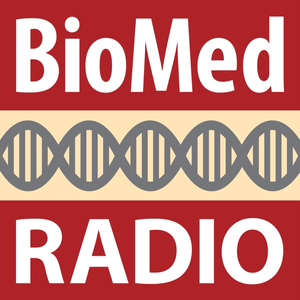
Bruchas-BRAIN grant
BioMed Radio - Washington University School of Medicine in St. Louis10/12/16 • 2 min
As part of the White House Brain Initiative, researchers at Washington University School of Medicine in St. Louis have received two grants to develop tools to map and activate pathways in the brain with light. With $3.8 million in funding from the National Institutes of Health (NIH), the researchers, with collaborators at the University of California, San Diego School of Medicine and the University of Illinois at Urbana-Champaign, will study how light-sensitive proteins can be used to control specific brain circuits with the goal of understanding how the brain is wired to regulate behaviors, such as stress, anxiety and depression.
THE WHITE HOUSE BRAIN INITIATIVE HELPS FUND CUTTING-EDGE PROJECTS THAT HELP SCIENTISTS BETTER UNDERSTAND THE WORKINGS OF THE BRAIN. A TEAM OF RESEARCHERS AT WASHINGTON UNIVERSITY SCHOOL OF MEDICINE IN ST. LOUIS HAS RECEIVED A PAIR OF GRANTS FROM THE INITIATIVE TO FUND THE DEVELOPMENT OF TOOLS ALLOWING ALLOW THEM TO USE LIGHT-SENSING PROTEINS FROM OTHER ORGANISMS, BIND THOSE PROTEINS TO RECEPTORS ON BRAIN CELLS, AND THEN USE LIGHT TO MAP AND ACTIVATE BRAIN PATHWAYS. JIM DRYDEN HAS THE STORY
THE RESEARCHERS, FROM WASHINGTON UNIVERSITY SCHOOL OF MEDICINE IN ST. LOUIS AND THE UNIVERSITY OF CALIFORNIA, SAN DIEGO SCHOOL OF MEDICINE, WILL STUDY OPSINS. THOSE ARE LIGHT-SENSITIVE PROTEINS FROM THE EYES OF ANIMALS, AND HUMANS. IN ANIMALS, SUCH PROTEINS OFTEN ARE USED TO TELL THE ANIMAL WHEN ITS DAYTIME, TO HELP THE ANIMAL AVOID PREDATORS, TO FIND A MATE, ETC. THE SCIENTISTS WILL USE THOSE NATURALLY OCCURING PROTEINS AND
(act) :20 o/c its connected
Combine them with similar, related proteins that exist, for example, dopamine receptors. In this grant, were going to take proteins and combine some of their features with these naturally-occurring proteins, that are in humans and in other mammals, and be able to make tools that we can turn on switches in the brain to sort of map how its connected.
THE BRAIN INITIATIVE GRANT WILL HELP BRUCHAS AND HIS COLLEAGUES STUDY THE STRUCTURE OF ALL KINDS OF OPSIN PROTEINS IN ANIMALS, FROM GOLDFISH TO BIRDS, AND HE SAYS CLEAVING THOSE ANIMAL PROTEINS ONTO HUMAN PROTEINS, LIKE BRAIN CELL RECEPTORS, COULD ALLOW THE SCIENTISTS TO INFLUENCE BEHAVIOR IN ANIMALS. (act) :18 o/c the brain
Its a three-year proposal involving everything from very detailed structural biology of how these proteins look at the structural level, all the way up to taking these proteins and using genetic manipulations to get them into animals and to do behavioral experiments to see, can we actually turn on circuits and use this to map the brain?
MANY OF THE OPSIN PROTEINS THAT WILL BE USED IN THE STUDY ARE SUBSTANCES THAT ALREADY HAVE BEEN EXTENSIVELY STUDIED BY BIOLOGISTS.
(act) :30 o/c and anxiety
And thats whats so beautiful about it is were taking naturally occurring things that many biologists have studied, and were taking that knowledge, that basic knowledge, that was discovered; and now were combining it with some of the mammalian biology, the mammalian neuroscience that we do in my lab to fuse the two disciplines in a way that allows us to sort of perturb neural circuits in interesting ways and eventually be able to understand how they function normally so that we can develop better treatments for mental health disorders, including, you know, psychiatric diseases like depression and anxiety.
BRUCHAS PREVIOUSLY WAS PART OF A TEAM THAT DEVELOPED WIRELESS, MICRO-LED DEVICES THAT CAN BE IMPLANTED INTO THE THE BODY OF A MOUSE TO TRANSMIT LIGHT. BY USING OPSIN PROTEINS FROM OTHER ORGANISMS, BRUCHAS SAYS IT SHOULD BE POSSIBLE IN THE FUTURE TO USE SEVERAL DIFFERENT WAVELENGTHS OF LIGHT IN THESE STUDIES. TYPICALLY, BRUCHAS SAYS HIS TEAM HAS ONLY USED ONE TYPE OF LIGHT.
(act) :21 o/c access previously
But now were going to be moving into other colors, like down into the UV range of light, to the far-red-shifted sensitivities. Theres a whole nother world out there in biology that responds to UV and responds to far-red that your eye and my eye cant see. Some advantages of far-red are that you can penetrate tissue deeper, we can access parts of the brain that we wouldnt be able to access previously.
BRUCHAS SAYS COMBINING THE LIGHT-SENSING PARTS OF THE OPSINS TO RECEPTORS ON BRAIN CELLS SHOULD ALLOW SCIENTISTS TO ACTIVATE CELLS, TO INFLUENCE BEHAVIOR AND TO BETTER UNDERSTAND HOW THE VARIOUS CIRCUITS IN THE BRAIN ARE ORGANIZED. IM JIM DRYDEN
RUNS 2:55
10/12/16 • 2 min
Episode Comments
0.0
out of 5
No ratings yet
eg., What part of this podcast did you like? Ask a question to the host or other listeners...
Post
Generate a badge
Get a badge for your website that links back to this episode
<a href="https://goodpods.com/podcasts/biomed-radio-washington-university-school-of-medicine-in-st-louis-130912/bruchas-brain-grant-6471629"> <img src="https://storage.googleapis.com/goodpods-images-bucket/badges/generic-badge-1.svg" alt="listen to bruchas-brain grant on goodpods" style="width: 225px" /> </a>
Copy